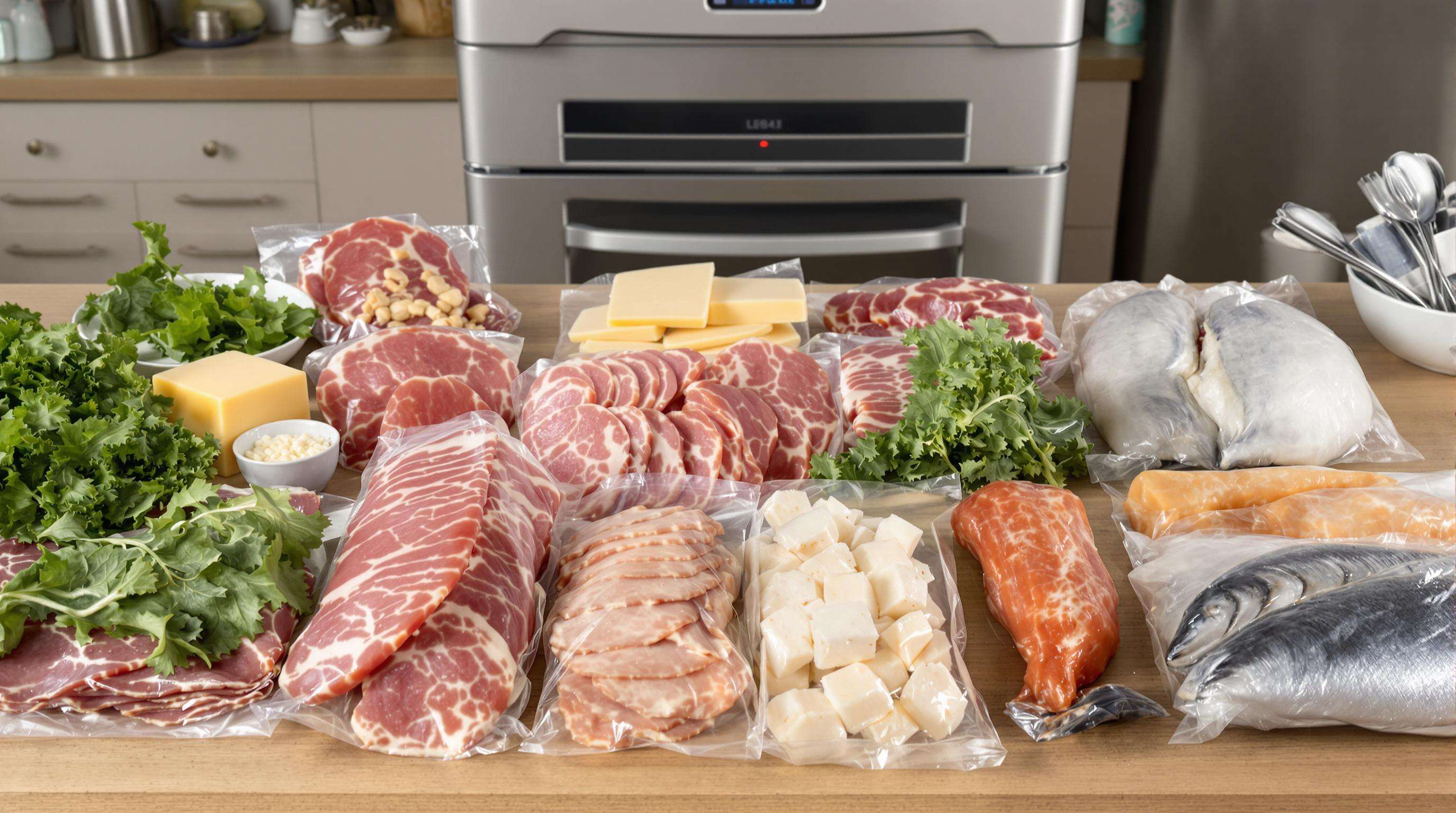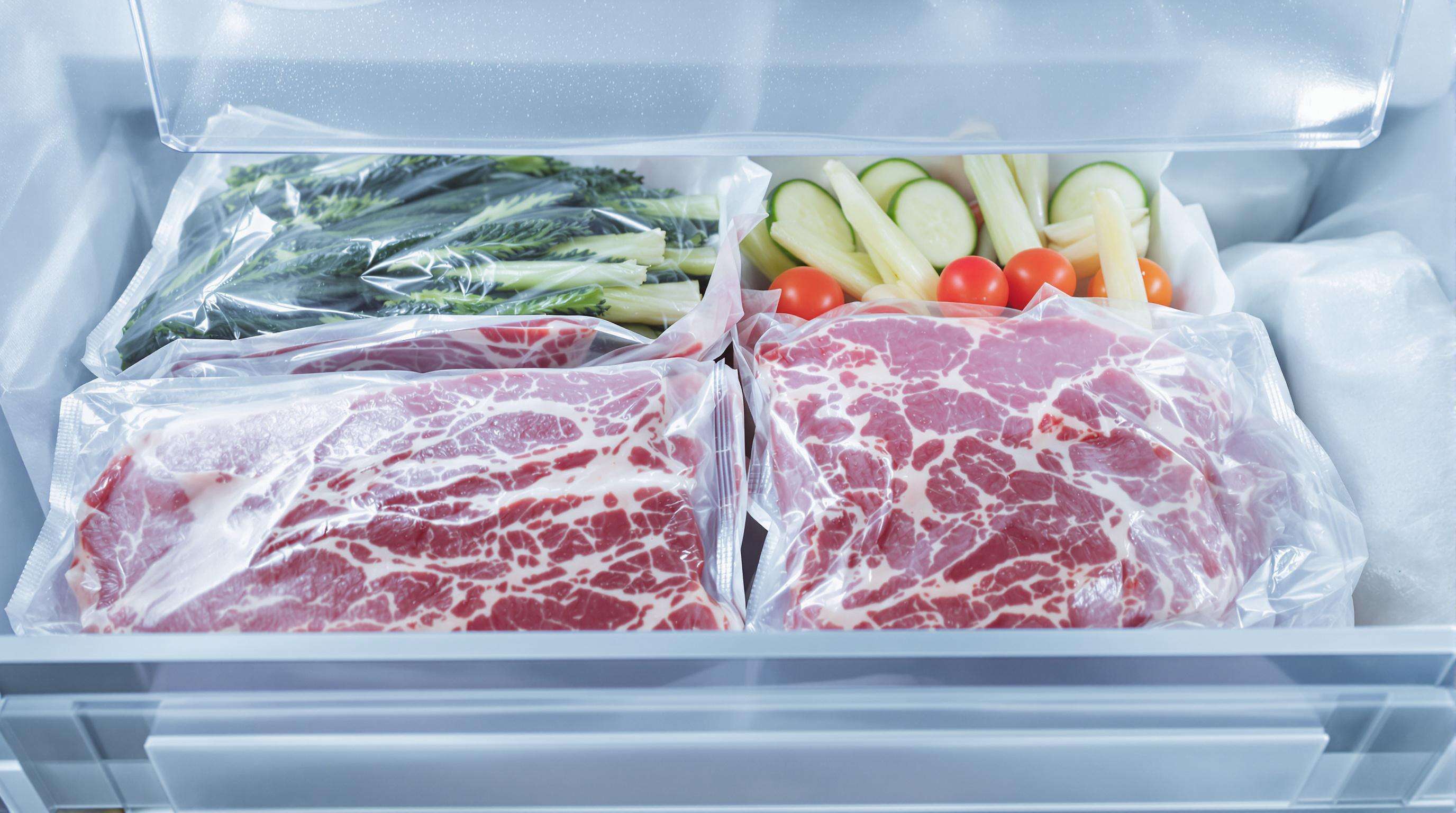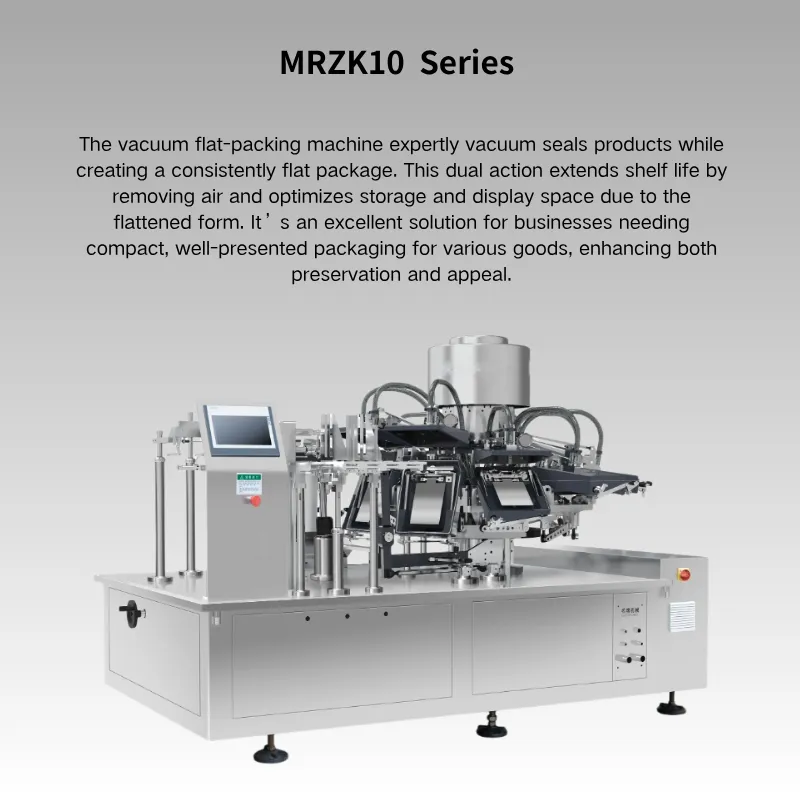Shelf Life Extension with Vacuum Packaging Machines

The Oxidation Prevention Mechanism
By taking 99% of Oxygen away from sealed foods, you can help prevent food from being spoiled. This oxygen deprivation scrambles oxidation reactions that cause flavor loss, color fading and nutrient destruction in common foods like nuts, cured meats and dried fruit. Studies indicate that vacuum sealed meat keeps oxidation at bay and slows growth rate of aerobic bacteria up to 8 times longer than exposure to air sealed in non-vacuum packaging. By forming anaerobic barricades, these systems also prevent the growth of aerobic bacteria (a two-method approach to preservation that has been clearly established by food safety agencies worldwide).
Quantifiable Shelf-Life Increases Across Food Categories
Studies demonstrate vacuum packaging’s effectiveness varies by food type but consistently outperforms conventional methods:
| Food Category | Vacuum-Packed Shelf Life | Traditional Packaging | Extension Factor |
|---|---|---|---|
| Raw Meats | 7–10 days | 3–5 days | 2–3x |
| Frozen Fish | 12–18 months | 2–3 months | 4–6x |
| Hard Cheeses | 6–8 months | 1–2 months | 3–4x |
| Leafy Greens | 14–21 days | 4–7 days | 3–5x |
These metrics reveal how vacuum technology adapts to diverse moisture and fat content levels while maintaining safety standards.
Case Study: Extended Freshness in Meat Production
A midwestern meat processor adopting vacuum packaging machines reduced spoilage rates by 40% within six months. Their beef cuts retained optimal color and texture for 12 days under refrigeration—triple the lifespan of previous PVC-wrap methods. This improvement allowed the company to expand distribution radii by 200 miles while maintaining USDA compliance.
Vacuum Packaging Machines for Enhanced Food Safety
Anaerobic Barrier Against Bacterial Contamination
The oxygen-depleted environment inside vacuum-sealed packages disrupts bacterial metabolic processes, preventing replication. Research documents up to 10× slower bacterial growth rates in vacuum-sealed protein products compared to conventional packaging at identical temperatures.
Mold Growth Inhibition in Humidity Control
By eliminating internal moisture exchange, vacuum packaging maintains stable humidity conditions unfavorable for mold proliferation. Trials reveal vacuum-sealed cheeses exhibit <3% mold coverage after 60 days versus >35% in permeable packaging.
Pathogen Reduction Metrics in Delicate Products
| Product Category | Pathogen Reduction | Timeframe |
|---|---|---|
| Smoked Salmon | 98.7% | 14 days |
| Fresh Pasta | 95.1% | 7 days |
| Artisanal Cheeses | 99.3% | 21 days |
Listeria monocytogenes presence drops below detectable levels (<0.1 CFU/g) in 83% of vacuum-sealed ready-to-eat meals within refrigeration periods.
Freezer Burn Prevention Through Vacuum Packaging

Moisture Retention Science in Food Preservation
Vacuum packaging combats freezer burn by removing 99% of atmospheric oxygen and forming an airtight seal around products. This process maintains internal humidity levels at 85-95% RH (relative humidity), preventing dehydration while preserving cellular integrity.
Texture and Form Maintenance in Frozen Goods
Vacuum-sealed packaging preserves structural integrity through:
- Ice crystal minimization: Tight seals reduce ice formation by 70% in meats and seafood
- Vapor barrier protection: Multi-layer films block 98% of moisture vapor transmission
A 2023 Food Quality Survey found vacuum-packed vegetables maintain crispness 3x longer than conventionally frozen counterparts.
Food Waste Reduction via Vacuum Packaging Technology
Global Waste Statistics and Preservation Solutions
Vacuum packaging technology counters food waste through oxygen removal that decelerates decomposition. Businesses implementing these systems gain immediate waste reduction advantages while addressing critical resource conservation challenges.
Case Study: Supply Chain Loss Reduction in Dairy
A dairy processor integrated vacuum packaging systems for its premium cheese lines, achieving a 200% shelf-life extension. Within three quarters, the company reported 40% reduction in refrigerated transport losses and expanded its distribution radius by 300 kilometers.
Economic Impact Analysis for Manufacturers
| Cost Factor | Conventional Packaging | Vacuum Packaging | Reduction |
|---|---|---|---|
| Spoilage Losses | $740k annually | $296k annually | 60% |
| Inventory Turnover | 45 days | 120 days | 62% longer |
| Recall Incidence | 3.2% of shipments | 0.9% of shipments | 72% fewer |
Vitamins and Minerals Retention Mechanisms
Vacuum packaging preserves nutrients by preventing oxidation reactions. The USDA reports up to 70% greater retention of vitamins C and B in vacuum-packed herbs versus conventionally preserved counterparts.
Creating an oxygen-free environment simultaneously inhibits aerobic bacteria proliferation that accelerates nutrient leaching.
Aroma and Taste Stability in Packaged Goods
Flavor preservation hinges on vacuum technology's volatile compound stabilization. Coffee beans and spices preserved through vacuum sealing demonstrate 80% higher essential oil retention versus permeable packaging.
Vitamin C Case Study in Produce Packaging
Broccoli florets vacuum-packed at harvest preserved 92% of initial Vitamin C after refrigeration for 14 days according to AgResearch trials. Control samples suffered 40% degradation under identical refrigeration.
FAQ
What is the main benefit of vacuum packaging machines?
The main benefit of vacuum packaging machines is the extension of the shelf life of foods by removing oxygen, which helps prevent oxidation and slows bacterial growth.
How does vacuum packaging prevent freezer burn?
Vacuum packaging prevents freezer burn by forming an airtight seal around products, maintaining internal humidity, and reducing atmospheric oxygen levels, which helps preserve cellular integrity.
Can vacuum packaging help reduce food waste?
Yes, vacuum packaging can significantly reduce food waste by extending the shelf life of foods, thus minimizing spoilage and losses in the supply chain.
Are there economic benefits to using vacuum packaging?
Yes, vacuum packaging can lead to cost savings by reducing spoilage losses, extending inventory turnover periods, and decreasing recall incidences.

